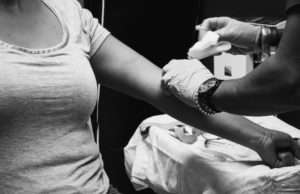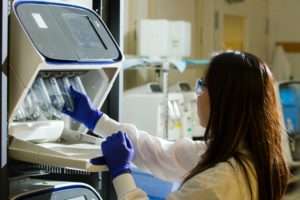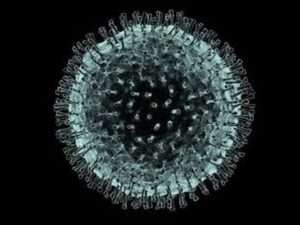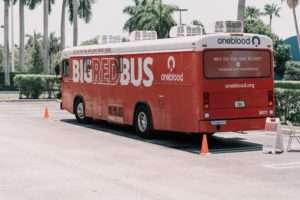Convalescent refers to anyone recovering from a disease. Plasma is the yellow, liquid part of blood that contains antibodies. Antibodies are proteins made by the body in response to infections. Convalescent plasma1 from patients who have already recovered from coronavirus disease 2019 (COVID-19) may contain antibodies against COVID-19. Giving this convalescent plasma to hospitalized people currently fighting COVID-19 may help them recover. FDA has issued an emergency use authorization for convalescent plasma to be used in hospitalized COVID-19 patients and is being investigated for the treatment of COVID-19 because there is no approved treatment for this disease. Based on scientific evidence available, the FDA concluded this product may be effective in treating COVID-19 and that the known and potential benefits of the product outweigh the known and potential risks of the product in hospitalized COVID-19 patients. Jay Harold has created a post, “Convalescent Plasma & COVID 19: FDA Guidance,” to provide useful drug information about COVID-19 from the National Institutes of Health (NIH).
FDA has issued guidance to provide recommendations to health care providers and investigators on the administration and study of investigational convalescent plasma collected from individuals who have recovered from COVID-19 (COVID-19 convalescent plasma) during the public health emergency.
The guidance provides recommendations on the following:
- pathways for use of investigational COVID-19 convalescent plasma
- patient eligibility
- collection of COVID-19 convalescent plasma, including donor eligibility and donor qualifications
- labeling, and
- record-keeping
Because COVID-19 convalescent plasma has not yet been approved for use by FDA, it is regulated as an investigational product. A health care provider must participate in one of the pathways described below. FDA does not collect COVID-19 convalescent plasma or provide COVID-19 convalescent plasma. Health care providers or acute care facilities should instead obtain COVID-19 convalescent plasma from an FDA-registered blood establishment.
Excerpts from the guidance document are provided below.
Background
The Food and Drug Administration (FDA or Agency) plays a critical role in protecting the United States (U.S.) from threats including emerging infectious diseases, such as the Coronavirus Disease 2019 (COVID-19) pandemic. FDA is committed to providing timely guidance to support response efforts to this pandemic.
One investigational treatment being explored for COVID-19 is the use of convalescent plasma collected from individuals who have recovered from COVID-19. Convalescent plasma that contains antibodies to severe acute respiratory syndrome coronavirus 2 or SARS-CoV-2 (the virus that causes COVID-19) is being studied for administration to patients with COVID-19. Use of convalescent plasma has been studied in outbreaks of other respiratory infections, including the 2003 SARS-CoV-1 epidemic, the 2009-2010 H1N1 influenza virus pandemic, and the 2012 MERS-CoV epidemic.
Although promising, convalescent plasma has not yet been shown to be safe and effective as a treatment for COVID-19. Therefore, it is important to study the safety and efficacy of COVID-19 convalescent plasma in clinical trials.
Pathways for Use of Investigational COVID-19 Convalescent Plasma
The following pathways are available for administering or studying the use of COVID-19 convalescent plasma:
1. Clinical Trials
Investigators wishing to study the use of convalescent plasma in a clinical trial should submit requests to FDA for investigational use under the traditional IND regulatory pathway (21 CFR Part 312). CBER’s Office of Blood Research and Review is committed to engaging with sponsors and reviewing such requests expeditiously. During the COVID-19 pandemic, INDs may be submitted via email to [email protected].
2. Expanded Access
An IND application for expanded access is an alternative for use of COVID-19 convalescent plasma for patients with serious or immediately life-threatening COVID-19 disease who are not eligible or who are unable to participate in randomized clinical trials (21 CFR 312.305). FDA has worked with multiple federal partners and academia to open an expanded access protocol to facilitate access to COVID-19 convalescent plasma across the nation. Access to this investigational product may be available through the participation of acute care facilities in an investigational expanded access protocol under an IND that is already in place.

Currently, the following protocol is in place: National Expanded Access Treatment ProtocolExternal Link Disclaimer
3. Single Patient Emergency IND
Although participation in clinical trials or an expanded access program are ways for patients to obtain access to convalescent plasma, for various reasons these may not be readily available to all patients in potential need. Therefore, given the public health emergency that the COVID-19 pandemic presents, and while clinical trials are being conducted and a national expanded access protocol is available, FDA also is facilitating access to COVID-19 convalescent plasma for use in patients with serious or immediately life-threatening COVID-19 infections through the process of the patient’s physician requesting a single patient emergency IND (eIND) for the individual patient under 21 CFR 312.310. This process allows the use of an investigational drug for the treatment of an individual patient by a licensed physician upon FDA authorization if the applicable regulatory criteria are met. Note, in such case, a licensed physician seeking to administer COVID-19 convalescent plasma to an individual patient must request the eIND (see 21 CFR 312.310(b)).
To Obtain a Single Patient Emergency IND
The requesting physician may contact the FDA by completing Form FDA 3926 (https://www.fda.gov/media/98616/download) and submitting the form by email to [email protected].
NOTE: To enable electronic completion of the form, download it from your internet browser, save locally, close, and re-open. Do NOT ATTEMPT to fill out this form after opening it from your internet browser; the form will not be fillable until downloaded, saved, and opened locally. Check either box 3a or 3b to enable form logic and the appropriate fields. For more detailed instructions see the FDA FORM 3926 Instructions (https://www.fda.gov/media/98627/download).
CBER requests that all forms be filled out electronically to facilitate a rapid review. Handwritten forms are often hard to read and may delay the processing of the request. Please pay special attention to the following:
- The completed form should include a brief clinical history of the patient, including age, gender, diagnosis, current therapy, and rationale for requesting the proposed investigational treatment in order to meet the expanded access use requirements in 21 CFR 312.305 and 312.310.
- The form should include the name of the blood establishment collecting the COVID-19 convalescent plasma.
- Providers should complete the form to the extent possible, and FDA will work with the provider if additional information is required.
For requests between 8 am ET and 8 pm ET (Mon-Sun): FDA will respond within four hours. For requests between 8 am ET and 8 pm ET when the provider is unable to complete and submit Form FDA 3926 due to extenuating circumstances, the provider may contact the FDA’s Office of Emergency Operations at 1-866-300-4374 to be routed to the appropriate clinical review staff for assistance with submitting the request.

For requests that are made overnight between 8 pm ET and 8 are ET (Mon-Sun):
- In case of a medical emergency, i.e., when authorization and issuance of an emergency IND number are needed before 8 am the next morning, the provider should contact FDA’s Office of Emergency Operations at 1-866-300-4374 to be routed to the appropriate clinical review staff for assistance with submitting the request and issuance of an emergency IND number.
- In case of a non-critical overnight request, the Form FDA 3926 should be submitted by email to [email protected] for review, and the emergency IND number will be issued by 8 am the next morning.
In situations when the provider is unable to complete and submit Form FDA 3926 due to extenuating circumstances, the requestor must agree to submit an expanded access application (e.g., Form FDA 3926) within 15 working days of FDA’s authorization of the use (21 CFR 312.310(d)(2)). When submitting the expanded access application form the requestor is advised to indicate that the application is a follow-up to a previously granted emergency IND, and to provide the IND number.
Patient Eligibility
To facilitate requests for eINDs for use of COVID-19 convalescent plasma to treat patients, health care providers seeking an emergency IND may want to consider the eligibility criteria used for the National Expanded Access Treatment ProtocolExternal Link Disclaimer. These criteria include:
- Laboratory confirmed COVID-19
- Severe or immediately life-threatening COVID-19, for example,
- Severe disease is defined as one or more of the following:
- shortness of breath (dyspnea),
- respiratory frequency ≥ 30/min,
- blood oxygen saturation ≤ 93%,
- the partial pressure of arterial oxygen to fraction of inspired oxygen ratio < 300,
- lung infiltrates > 50% within 24 to 48 hours
- Life-threatening disease is defined as one or more of the following:
- respiratory failure,
- septic shock,
- multiple organ dysfunction or failure
- Severe disease is defined as one or more of the following:
- Informed consent provided by the patient or healthcare proxy.
Collection of COVID-19 Convalescent Plasma
Health care providers or acute care facilities seeking to use COVID-19 convalescent plasma should include information in the IND submission that the COVID-19 convalescent plasma will be obtained from an FDA-registered blood establishment that follows the donor eligibility criteria and donor qualifications described below in collecting plasma from donors.

- Donor Eligibility
- COVID-19 convalescent plasma must only be collected from individuals who meet all donor eligibility requirements (21 CFR 630.10, 21 CFR 630.15). Note the additional donor eligibility requirements for the collection of plasma by plasmapheresis in 21 CFR 630.15 (b). Donation testing for relevant transfusion-transmitted infections must be performed (21 CFR 610.40) and the donation must be found suitable (21 CFR 630.30).
- COVID-19 convalescent plasma is collected from individuals who meet the following qualifications:
- Evidence of COVID-19 documented by a laboratory test either by:
- A diagnostic test (e.g., nasopharyngeal swab) at the time of illness OR
- a positive serological test for SARS-CoV-2 antibodies after recovery, if prior diagnostic testing was not performed at the time COVID-19 was suspected.
- Complete resolution of symptoms at least 14 days before the donation. A negative result for COVID-19 by a diagnostic test is not necessary to qualify the donor.
- Male donors, or female donors who have not been pregnant, or female donors who have been tested since their most recent pregnancy and results interpreted as negative for HLA antibodies.
- SARS-CoV-2 neutralizing antibody titers, if available
- When the measurement of neutralizing antibody titers is available, we recommend neutralizing antibody titers of at least 1:160. A titer of 1:80 may be considered acceptable if an alternative matched unit is not available.
- When the measurement of neutralizing antibody titers is not available, consider storing a retention sample from the convalescent plasma donation for determining antibody titers at a later date. Although optional for all IND pathways, storing samples for single patient eINDs is not recommended.
- Evidence of COVID-19 documented by a laboratory test either by:
Registered and licensed blood establishments that collect plasma intended for transfusion do not need to request a supplement to their license or obtain their own IND to collect and manufacture COVID-19 convalescent plasma for investigational use provided they 1) follow their standard operating procedures for plasma collection and all applicable regulations, and 2) collect plasma from individuals that meet the donor qualifications specified above, which would be included in the applicable IND(s) held by a health care provider or other sponsor.
Once manufactured, the COVID-19 convalescent plasma may be distributed for investigational use.
Blood establishments do not need to request an alternative procedure or exception under 21 CFR 640.120(a) to collect COVID-19 convalescent plasma.

-
Labeling
- The container label of COVID-19 convalescent plasma units must include the following statement, “Caution: New Drug–Limited by Federal (or United States) law to investigational use.” (21 CFR 312.6(a)).In addition, the requirements in 21 CFR 606.121 for the container label apply, including the requirement to include a reference to the circular of information.
- FDA recognizes that the current circular of information does not contain specific information about COVID-19 convalescent plasma regarding indications for use, dosage information, contraindications or cautions, but it provides information on the use of plasma.
- We recommend the use of a uniform container label for COVID-19 convalescent plasma. In particular, we recommend the use of the International Society of Blood Transfusion (ISBT) format specified in the United States Industry Consensus Standard for the Uniform Labeling of Blood and Blood Components Using ISBT 128.
- The manufacturing process used and the expiration date on the label for COVID-19 convalescent plasma should be the same as for other plasma products that are of the same type. For example, COVID-19 Convalescent Plasma, Fresh Frozen, should be frozen within 8 hours after collection, stored at -18C or colder and have an expiration date one year from the date of collection.
- The container label of COVID-19 convalescent plasma units must include the following statement, “Caution: New Drug–Limited by Federal (or United States) law to investigational use.” (21 CFR 312.6(a)).In addition, the requirements in 21 CFR 606.121 for the container label apply, including the requirement to include a reference to the circular of information.
- Recordkeeping
A health care provider who is participating in an IND, including an expanded access IND or eIND, must maintain records for the COVID-19 convalescent plasma unit(s) administered to the COVID-19 patient (21 CFR 312.62). Such records should include the unique identification number(s) (e.g., the ISBT donation identification number(s)) of the unit(s).
Jay Harold hopes you enjoyed this post, “Convalescent Plasma & COVID 19: FDA Guidance.” Please share it and read more about Jay Harold here. Please take this advice from Muhammad Ali and give back to others. “Service to others is the rent you pay for your room here on earth.”
Bibliography
- https://www.fda.gov/emergency-preparedness-and-response/coronavirus-disease-2019-covid-19/donate-covid-19-plasma
- https://www.fda.gov/vaccines-blood-biologics/investigational-new-drug-ind-or-device-exemption-ide-process-cber/recommendations-investigational-covid-19-convalescent-plasma#Patient%20Eligibility




